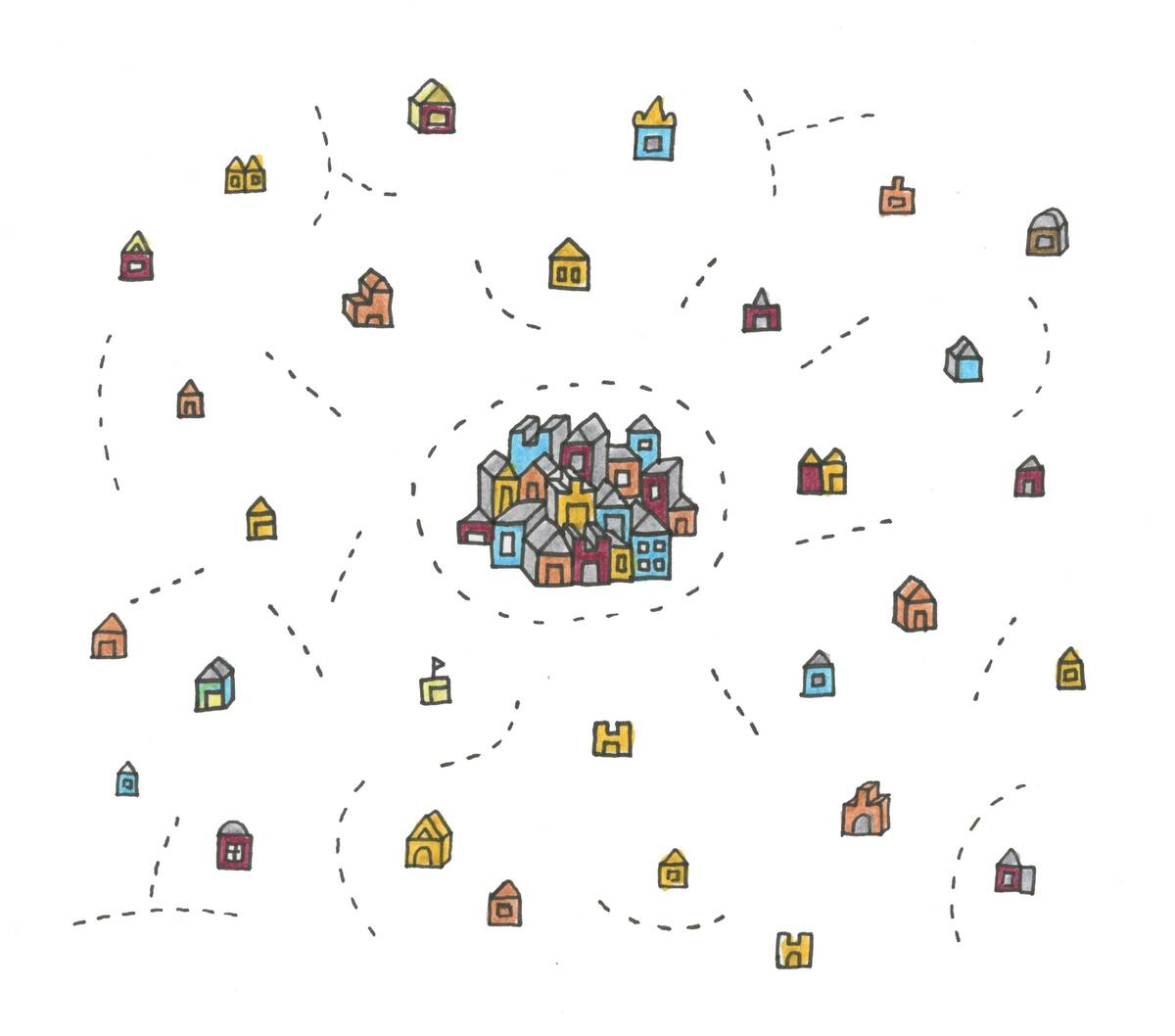Innovation Apr 13, 2017
How Tight-knit and Individualistic Communities Adopt New Technologies Differently
Innovations from fax machines to WhatsApp spread faster in some societies than others.

Nate Otto
At a restaurant with friends five years ago, Bryony Reich described a new messaging app called WhatsApp. It was encrypted, allowed international chatting, and best of all, it was free. Everyone in the group downloaded WhatsApp, and they have been messaging on it ever since.
The experience got Reich, now an assistant professor of strategy at the Kellogg School, thinking about how innovation spreads through societies. Are tight-knit groups—like her circle of friends at the restaurant—better or worse at spreading a new technology?
The prevailing theory had been that tightly knit groups served as a barrier to adoption and prevented a technology’s spread. That’s because, with fewer loose ties beyond one’s own group, there are fewer opportunities for technology to spread from outside to inside a social circle. But this theory did not take into account the fact that people can make decisions collectively and adopt certain technologies at the same time—a factor that could help an innovation diffuse through the group.
“Our models of how social structure influences diffusion should also capture the idea that people talk and make joint decisions,” she says.
What did she find when she adjusted the models to take this collective decision-making into account? “Social structure really matters,” Reich says.
Pieces of the Puzzle
Specifically, Reich found that the type of technology being introduced is the main factor in whether an innovation does or does not spread through a close-knit community.
Societies, countries, communities, and friend groups—collectively known as network structures—that are more individualistic and loosely connected are better at adopting “low-threshold” technologies, she found. These are innovations that are valuable even without a large number of adopters, such as computers or agricultural innovations.
“Getting joint adoption can be a way to kick start the process.”
But for higher-threshold technologies, societies with more tightly knit groups have the edge. A technology like WhatsApp, for example, requires a critical mass of people in order to provide a benefit. In Mexico, which consists of highly cohesive communities, 78 percent of the population used instant-messaging apps in 2013. This compares to just 23 percent of the U.S. population, which is ranked as one of the most individualistic societies.
The fax machine provides another example. The device was invented in the United States, but did not catch on right away. It did, however, take off in the 1980s in Japan, the most cohesive society in the world. After the fax machine’s widespread adoption by Japanese businessmen and homeowners, Western societies embraced it.
So, despite the prevailing wisdom, “countries with looser knit structures are not adopting all technologies to a greater extent,” Reich says. It’s just that they are doing so for the category of low-threshold technologies.
Matching Markets with Technologies
Reich says her model gives us a sense of why a given innovation or product may spread more easily in some societies versus others.
Companies that want to break into a new market could benefit from this information, Reich says. They would know where a particular innovation is more likely to succeed and what incentives could help tip the balance.
Cell-phone companies in the United Kingdom incentivized users to collectively adopt their high-threshold technology by offering lower fees for calls between customers with the same carrier. Family-and-friends phone plans work in a similar way.
This knowledge can help in the public-health arena, too.
In India, for example, many people go to the bathroom outdoors instead of using indoor toilets connected to sanitary sewers. Flies that land on excrement can carry germs inside, infecting people with deadly diseases. Getting a small number of people to use indoor toilets would not do much to improve health. In order to get the full benefit of a sewage system, many in the community would need to adopt the innovation, making it potentially a high-threshold innovation.
If that is the case, the government might want to target the more rural, close-knit communities and organize workshops explaining an indoor sanitation system’s benefits, encouraging people who live there to adopt the technology all at once. Bringing people together to discuss an innovation could help, Reich says.
“Getting joint adoption can be a way to kick start the process,” she says.
As a result of the research, companies and governments might be able to anticipate that some places with certain types of network structures will become the technological frontier for specific types of innovations. And that’s important, says Reich, because “adoption of new technologies—better ways of doing things—is really fundamental to growth and development, and important to explaining differences in income across countries.”
